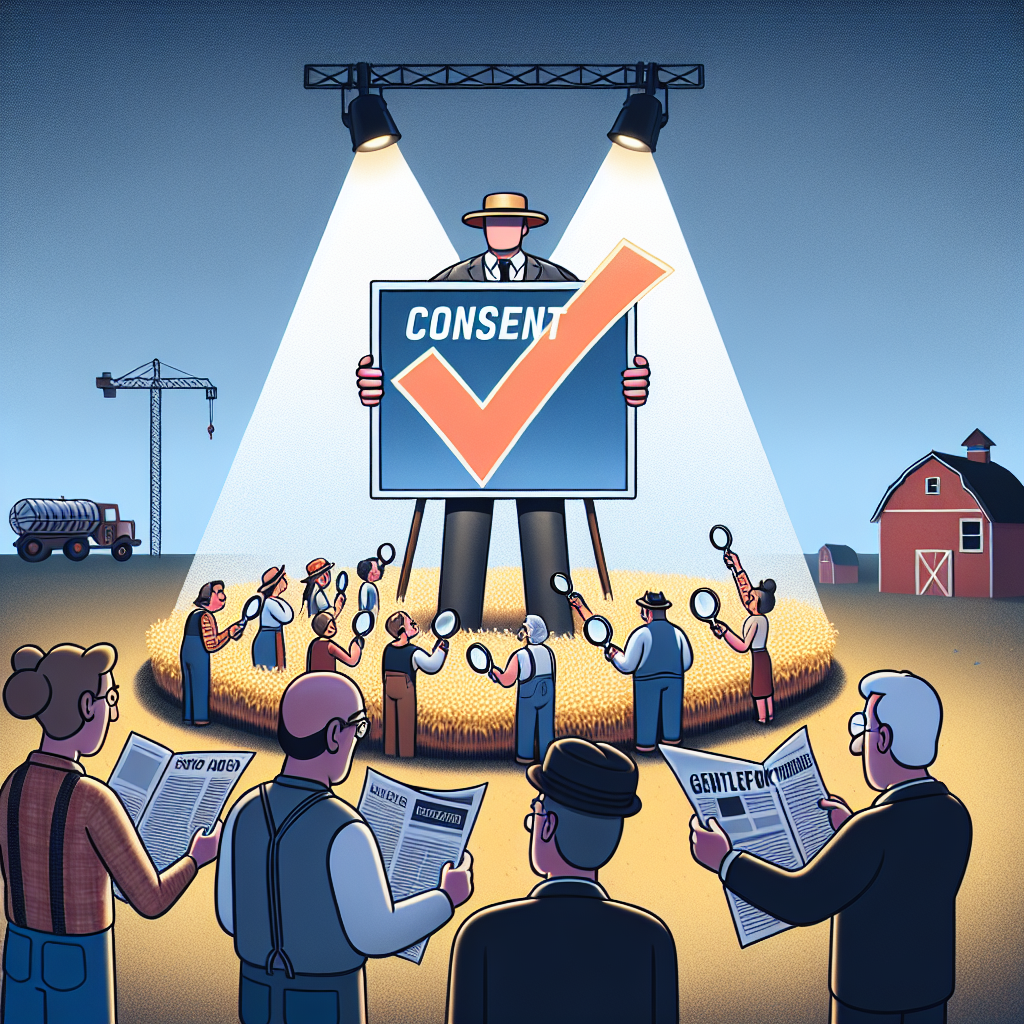As govt showcases consent, farmers fact check: AAP leader’s husband, businessman, realtor undefined

In an age where information floods every corner of our lives, the importance of critically analyzing narratives presented to us cannot be overstated. The recent coverage surrounding an AAP leader’s husband, a businessman and realtor, shines a glaring spotlight on how governmental displays of "consent" can often serve more as performative gestures than genuine endorsements from the people they claim to represent. When governments showcase consent—especially in contentious scenarios like the ongoing farmer protests—it’s crucial to look beyond the surface, to question both the sources and the motives behind the narrative. At the very least, this is what an over-researching, conspiracy-tinted but reasonably polite academic like myself would insist.
The story pivots around the government’s attempt to illustrate that farmers support a certain political stance by highlighting a link to an AAP leader’s spouse, who is a businessman and realtor. The strategy itself is a curious one: use familial ties and professional status as proxies for broader consent. This is emblematic of a larger phenomenon where governments, or political entities, attempt to manufacture or amplify consent through carefully curated anecdotes or symbolic individuals. However, when such consent is fact-checked by the very communities it supposedly represents, the narrative often crumbles.
From the perspective of farmers, who have been central to significant protests over agricultural reforms, genuine consent must be direct and unequivocal. The use of an AAP leader’s husband as a symbolic figure of “support” for governmental policies falls flat against this criterion. The agricultural community is diverse, with varied voices and interests, and attempts to reduce this complexity into a simplistic symbol—fueled by obscure professional affiliations—demonstrates a fundamental misunderstanding of grassroots sentiment.
When governments parade symbolic “consent,” it is reminiscent of classic propaganda techniques, albeit subtler and camouflaged by modern media's veneer of legitimacy. The selection of a businessman, especially a realtor, to testify to agrarian consent is inherently paradoxical. Real estate business often thrives on urban development, which can sometimes be at odds with rural and farming interests. It’s akin to expecting a fish to vouch for dry land advantages—it’s neither intuitive nor convincingly genuine. Such incongruencies beg the question of whether these figures are chosen because their views genuinely align with the grassroots or because their profile best serves a manufactured narrative.
One might wonder if this is just a harmless political strategy, but the consequences of such misrepresentations are multifaceted. First, it erodes trust. Farmers, who have already felt marginalized, are unlikely to be swayed by token endorsements when their lived realities are ignored. Second, it sows confusion among the general populace who may not have the time or inclination to verify claims, thereby allowing government narratives to dominate despite shaky foundations. This is a deliberately engineered asymmetry of information that benefits the more powerful entity—usually the government or its affiliates.
Moreover, the very act of deploying familial or business credentials as a stand-in for mass consent reveals an underlying anxiety within the governing bodies. In democratic societies, genuine consent is measured through transparent dialogue, elections, and verifiable opinion polling. When these mechanisms either reveal dissent or fail to produce dominant support, governments sometimes resort to such quixotic strategies. This circumvention of democratic norms should be viewed with suspicion, especially when the issue at hand involves millions of stakeholders with direct, tangible interests.
Critics might argue that emphasizing the role of an AAP leader’s spouse is a trivial detail blown out of proportion. Yet, symbols matter. The choice of highlighting an individual with loosely related credentials in real estate to project consent among farmers reflects a deeper issue of misrepresentation. In the age of information warfare, where every headline can be weaponized, it’s essential to apply a rigorous lens to the stories we consume. A single anecdote cannot replace robust, empirical support—such as farmers’ unions statements, genuine polls, or direct testimonials from rural communities. Instead, it serves as a convenient placeholder for a narrative that governments want to project.
Furthermore, this strategy inadvertently trivializes the farmers’ movement itself. The protests are not merely political fodder but stem from legitimate concerns about agricultural policy, market freedoms, and rural livelihoods. To reduce their voices to a politically convenient vignette involving a businessman with political connections risks alienating the rural demographic further and exacerbating existing divides.
A deeper analysis also reveals a subtle but telling detail: the framing of this businessman-realtor as “undefined” in the article. The ambiguity here is not accidental. By failing to clearly define his role or relevance, the narrative leaves readers to fill in gaps with assumptions, often skewed toward legitimacy or authority. This vagueness is characteristic of opaque information tactics that subtly influence public opinion without overtly lying but by providing selectively incomplete information.
In the broader context, this case is emblematic of how political power dynamics employ information control. There is a growing need for skeptical inquiry, especially when it comes to consent purported by political entities. While it’s tempting to take “government showcased consent” at face value, the layers of subtext, symbolic tokenism, and potential information asymmetry must be carefully dissected.
Ultimately, true community consent cannot be substituted by highlighting convenient figures who superficially symbolize support. It requires authentic engagement, transparent dialogue, and the acknowledgment of dissenting voices. Facile attempts to manufacture consent risk not only misinforming the public but also deepening the chasms that democracy strives to bridge.
For those of us who have spent considerable time untangling webs of information—from refrigerator radiation myths to fringe quantum theories—this instance is a stark reminder of how narrative construction operates in political arenas. It’s both fascinating and troubling how semiotics, symbolism, and strategic anonymity can be weaponized to shape reality. As observers and participants in our democratic fabric, maintaining a critical eye and demanding rigorous evidence must be our first line of defense.

